Dot Cards
As we talked about last week, subitizing is foundational and relies on visual patterns. Often parents focus on symbolic representations of numbers and encourage their children to memorize these symbols. Parents might believe that when their children know these symbols they have an understanding of what that symbol means and represents. However, “knowing” the number words and “understanding” their numerical meanings are related, but not identical accomplishments. How can we help our youngsters not only know their numbers, but also understand their meanings?
The first step should be focusing on the meanings of the numbers rather than the symbols. A great way to do this is dot cards.
For this activity you will need a set of plain index cards and dot stickers. I used traditional 3×5 blank index cards, but any size will work as long as they are consistent. For the dot stickers, “color coding labels” work great for this activity!
When first introducing this activity, I like to use small numbers, for example one through five. For the number one, you take one index card and one dot sticker. Place the dot sticker as close to the very center of the index card as possible.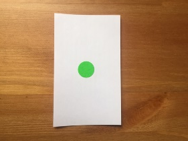
For the number two, take two dot stickers and place them in the center right next to one another. The placement and arrangement of the dots on the card will make it easier for our children, especially when this activity is first introduced, to begin their number understanding. 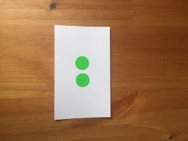
Continue this process until you get to the number five, following the visual aid as closely as possible. When I first introduce this game, I like to use the same color stickers throughout the first sets of cards. Once you have completed your first set of cards, make a second set following the same steps. It is important that these two sets of cards are as identical as possible.
.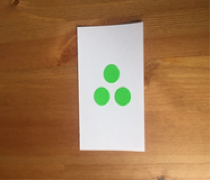

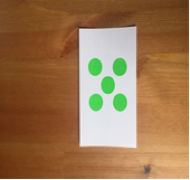
So, now that you’ve created your two sets of dot cards, what are you going to do with them? First, look at the cards with your child and see if they can identify what these dots represent. Go through each card one at a time and have a conversation about what they see. Some questions you can ask are:
- “Can you tell me what you see?”
- “I see one dot on this card, how many do you see on this one (show them a different card)?”
- “I see two dots on this card, can you show me the number two with your fingers?”
There are different ways to incorporate these cards into playtime with your children. Some of my favorites are:
- Dot Card War: For this game I like to add a blank index card in the pile to introduce children to the number zero. I then shuffle all of the cards from both sets (making sure each set has a blank card). Then deal a card to each player. The player with the bigger number (more dots) gets to keep all of the cards for that round. Keep repeating this process until you run out of cards.
- Dot Card Match: Shuffle the cards from both sets together, and lay them face down. Like in traditional matching games, each player gets a chance two pick two cards and turn them over. The goal to find the cards that has the same number of dots on them. Once the player, finds the matching cards, they get to keep them. Each player takes a turn until you run out of the cards. If you would like to make this game last longer, you can make additional sets of dot cards. If you would like to make it more challenging, you can change the dot arrangements in additional sets of dot cards.
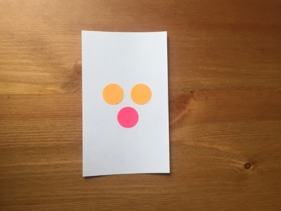

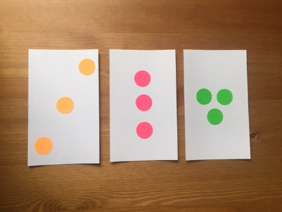
Have fun subtizing!
Great ideas!
It’s imperative to focus on the meaning of numbers rather than the number. What does the number represent?
Great ideas!
To subitize means to be able to identify the number of things in a set simply by quickly looking at them-not by counting them one by one. Dot cards are a great example to teach subitizing. These games are just some of the vast examples out there for using dot cards. They can start of simple and work towards more complex patterns.
Great idea, can be made quickly and changed as needed. Great for teaching to subitize